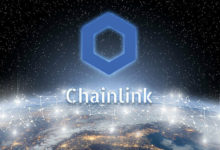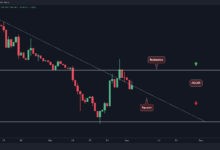Measuring the Value of Digital Ownership via a Web3 Benchmark

Contributing Writers:Kelly Ye, CFA, Head of Research, and Max Good, Senior Index Research Analyst at CoinDesk IndicesIntroduction
Web3 – also known as “Web 3.0” or “Web 3” is a term that has become increasingly popular as the evolution of the Internet advances with digital assets. The term itself describes the next generation of the Internet that allows users to participate beyond reading, enabled by Web 1, and writing, enabled by Web 2. For example, in the 1990’s, Web 1 was comprised mostly of a collection of links and homepages that were readable but not particularly interactive. In 2004, the next version of the Internet, Web 2 allowed people to not only read content but also create their own and publish it through blogs and social media channels. As people became better informed on how their personal data was collected and used by the publishing and social media platforms, a greater need arose for more privacy, ownership, and control of individual information and content. Therefore, Web3 is emerging as the next iteration of the Internet that aims to reduce dependency on large technology companies through the use of decentralized protocols.[1]
The digital assets that represent Web3 are characterized by open, autonomous, and decentralized technologies within internet ecosystems that enable trustless infrastructure and remove intermediaries and central monopolies. This gives individual users power and ownership over their data, identity, digital assets, security, and transactions. Web3 technologies can run autonomously with no need for a centralized organization to maintain their operation; this frees up creative resources to build out a universe of decentralized financial tools and applications (dApps).
According to the CoinDesk Digital Asset Classification Standard (DACS)[2], the standard for defining the industries of digital assets, Web3 is not defined as an industry, industry group or sector. Rather, it is comprised of a diverse set of digital assets across industry groups.
In this paper, we describe the CoinDesk Industry Group Select Equal Weight Index (DIGS), which is designed to measure the performance of the largest digital asset in each DACS Industry Group that meets certain market capitalization, trading, and custody requirements. Its constituents are equally weighted at each reconstitution.
What is in the DIGS Index Selection Universe?
Since Web3 covers a broad range of applications that extends beyond one Industry, Industry Group, or Sector within DACS, a digital asset is eligible for inclusion in the Index Universe, if it is ranked in the top 200 in the latest published DACS report with an assigned Industry Group. (Exhibit 1)
Exhibit 1: CoinDesk Digital Asset Classification Standard (DACS) Sectors, Industry Groups, and Industries
In addition to the DACS Industry Group assignment, investability and liquidity criteria are important so that the Index can be tracked by investable products. Eligible digital assets must:
have an average market cap of $1.5 billion over the seven days leading up to the reconstitution ($1.2 billion for current constituents);
be listed on three eligible exchanges with custodian services available from Coinbase Custody; and
be accessible by U.S. investors
Furthermore, the index excludes stablecoins or meme coins.
How Are Assets in DIGS Chosen?
In the spirit of size, liquidity, and diversification across Industry Groups, the Index constituent selection process targets the largest digital asset from each Industry Group, subject to a buffer rule to reduce turnover. If only one digital asset is eligible in an Industry Group, it will automatically be included in the Index. If at least two digital assets are eligible in an Industry Group, a ranking is applied to choose the constituent. The ranking process sorts by market cap, and if the biggest asset is incumbent or there are no current constituents from the Industry Group, that asset will be included in the Index. However, to reduce turnover, a new asset may only replace an incumbent within its Industry Group if the market cap is 1.2 times that of the existing asset.
Based on this selection process, it is possible that some Industry Groups may not be represented in the Index if no digital assets qualify.
What is Currently in DIGS?
The DIGS index reconstitutes quarterly on the 2nd business day of January, April, July, and October. At its inception date of 4/4/2022, the index is made of ten digital assets included in DIGS, each representing a unique Industry Group: Oracle (LINK); Shared Storage (FIL); Private (ZEC); Transparent (BTC); Credit Platform (AAVE); DAO (MKR); Exchanges (UNI); Metaverse (MANA); Multi-Chain / Parachain (AVAX); and Single Chain (ETH). Since the constituents each represent a unique Industry Group and are equally weighted, the index is well-diversified across assets and Industry Groups with each representing 10% of the Index weight.
However, one or more than one included Industry Group may be assigned to a Sector. Therefore, not all Sectors are represented equally. At index inception, 30% is in DeFi; 20% is in Smart Contract Platform, Computing, and Currency; and 10% is in Culture & Entertainment.
Exhibit 2: Top Ten Assets in DIGS by Industry Group and Sector
Represented DACS Industry Group Definitions[3]Oracle: Oracle refers to any project with the primary ability to gather, organize, and transmit either on-chain to on-chain data or off-chain to on-chain data in real time. It typically operates with a native token to cover transaction costs and governance rights.Shared Storage: Shared storage refers to the decentralization of storage servers which are traditionally owned and operated by a central organization. Shared storage decentralizes the storage responsibilities across an open-source network of miners with a system of economic incentives. This allows for pseudonymous, private file sharing on a decentralized network. The centralization of data storage is a high risk for potential hacks and bad actors to access sensitive information. Shared storage platforms increase security of data storage by running on a blockchain network that allows for privacy and pseudonymity of data transmitters.Private: Any digital asset whose ledger does not display the deposit addresses of the sender or the receiver. In addition, the ledger does not reveal the wallet balances of any holder. This can include blockchains that utilize Zero Knowledge Proofs (zksnarks, zkrollups), Schnorr signatures, and any similar innovations that hide the addresses of users, while maintaining trust.Transparent: Any digital asset whose ledger displays the deposit addresses of both senders and receivers and may reveal wallet balances publicly.Credit Platforms: Decentralized credit programs where participants can lend out their tokens and earn an interest rate determined by an automated protocol.Decentralized Autonomous Organization (DAO): DAOs are open source blockchain protocols governed by a set of rules, embedded in smart contracts that are created by its elected members who can automatically execute certain actions without the need for intermediaries. A DAO can be defined as a protocol with the intended goal of securing a basket of digital assets while allowing the contributors to that basket to have direct governance rights over that basket. The governance rights allow contributors to vote to approve of or deny proposals.Exchanges: Decentralized exchanges allow token holders to do peer-to-peer trading that cannot be controlled, censored, or altered by any central authority.Metaverse: A loose network of virtual worlds with social connections and interactions as a primary function. Based on blockchain technology, it encompasses virtual worlds and augmented reality. Metaverse includes gaming realms, GameFi, and virtual real estate. Virtual worlds must maintain a decentralized marketplace and offer the ability to tokenize and trade digital assets within the metaverse.Multi-Chain / Parachain: A smart contract platform that allows for multiple parallel blockchains and cross-chain interoperability. It can be structured with a relay chain that allows slots for external parallel chains or parachains. The relay chain allows for pooled security and pooled block execution, resulting in each parachain to become an isolated, independently validated blockchain that can achieve its own levels of scalability.Single Chain: A Layer 1 blockchain in which all transactions are recorded on the primary distributed ledger. Single chain allows for layer 2 scaling solutions that remain tied to the primary blockchain for transactional competency.Conclusion
Web3 is an extremely important advancement to the functionality of the Internet, allowing users to participate in it beyond reading and writing by owning their personal content to reduce dependency on large technology companies through the use decentralized protocols. This gives the individual users power over their data, identity, digital assets, security, and transactions. Although Web3 is not defined by DACS, it nevertheless helps investors navigate the full stack of Web3 applications through its sector, industry group, and industry taxonomy.
The CoinDesk Industry Group Select Equal Weight Index gives investors greater transparency into the value of digital ownership in the world of Web3 and provides a framework to them to access the most liquid and investable assets in this space.
Disclaimer:
CoinDesk Indices, Inc. (“CDI”) does not sponsor, endorse, sell, promote, or manage any investment offered by any third party that seeks to provide an investment return based on the performance of any index.
CDI is neither an investment adviser nor a commodity trading advisor and makes no representation regarding the advisability of making an investment linked to any CDI index. CDI does not act as a fiduciary. A decision to invest in any asset linked to a CDI index should not be made in reliance on any of the statements set forth in this document or elsewhere by CDI.
All content contained or used in any CDI index (the “Content”) is owned by CDI and/or its third-party data providers and licensors, unless stated otherwise by CDI. CDI does not guarantee the accuracy, completeness, timeliness, adequacy, validity, or availability of any of the Content. CDI is not responsible for any errors or omissions, regardless of the cause, in the results obtained from the use of any of the Content. CDI does not assume any obligation to update the Content following publication in any form or format.
References [1] https://www.coindesk.com/learn/what-is-web-3-and-why-is-everyone-talking-about-it/ [2] https://www.coindesk.com/indices/dacs/ [3] https://downloads.coindesk.com/cd3/DACS+-+Glossary+-+Final.pdf
© 2022 CoinDesk Indices, Inc. All rights reserved.






 Bitcoin
Bitcoin  Ethereum
Ethereum  Tether
Tether  USDC
USDC  TRON
TRON  Dogecoin
Dogecoin  Cardano
Cardano  Bitcoin Cash
Bitcoin Cash  Chainlink
Chainlink  LEO Token
LEO Token  Stellar
Stellar  Monero
Monero  Zcash
Zcash  Litecoin
Litecoin  Hedera
Hedera  Dai
Dai  Cronos
Cronos  OKB
OKB  Tether Gold
Tether Gold  Ethereum Classic
Ethereum Classic  KuCoin
KuCoin  Gate
Gate  Algorand
Algorand  Cosmos Hub
Cosmos Hub  VeChain
VeChain  Dash
Dash  Tezos
Tezos  Stacks
Stacks  TrueUSD
TrueUSD  IOTA
IOTA  Basic Attention
Basic Attention  Theta Network
Theta Network  Decred
Decred  NEO
NEO  Qtum
Qtum  Synthetix
Synthetix  Ravencoin
Ravencoin  0x Protocol
0x Protocol  DigiByte
DigiByte  Zilliqa
Zilliqa  Nano
Nano  Numeraire
Numeraire  Siacoin
Siacoin  Waves
Waves  Ontology
Ontology  Enjin Coin
Enjin Coin  Status
Status  BUSD
BUSD  Pax Dollar
Pax Dollar  Hive
Hive  Lisk
Lisk  Steem
Steem  Huobi
Huobi  NEM
NEM  OMG Network
OMG Network  Augur
Augur  Bitcoin Gold
Bitcoin Gold  Ren
Ren  Bitcoin Diamond
Bitcoin Diamond